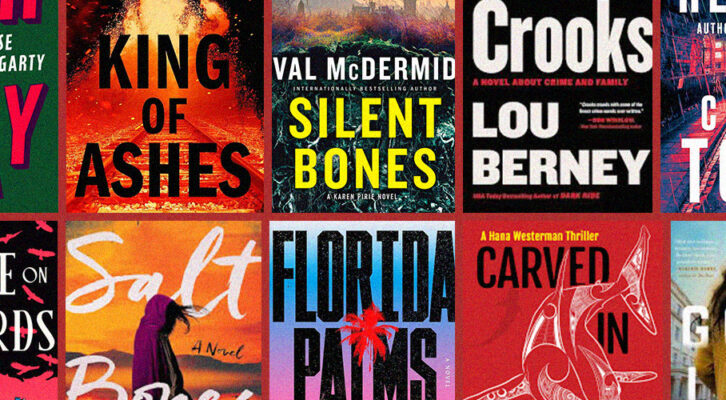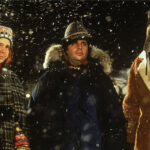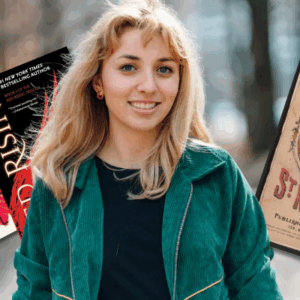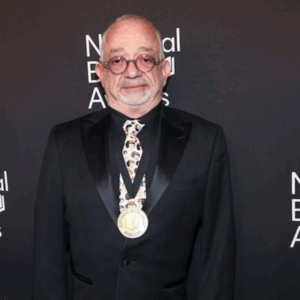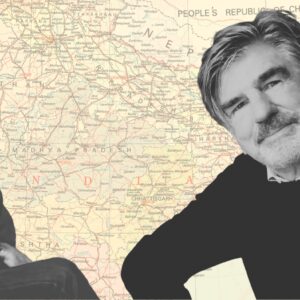
How Modern Life Has Been Shaped By the Power to Choose
From Sophia Rosenfeld’s Cundill Prize-Shortlisted “The Age of Choice”
Writing this book has involved a steady stream of choices, large and small, from what to write about in the first place to whether the initial word of this sentence should be “writing” or “drafting” or even “crafting.” If you plan to read any further, you too will have to make a number of choices: To read straight through in the order I’ve imposed? To read only the chapters that interest you? To look in the index and pick where to land? The table of contents and index, even the chapter headings, are there largely to help you decide.
You are unlikely to be rattled by having to choose among these several, discrete alternatives, however. A great deal of contemporary life is given over to studying menus of various kinds and then making deliberate, preference-driven selections from among the options presented—which is generally what choice today entails. We shop for goods we desire in supermarkets, at flea markets, in chain stores, and, increasingly, online. We pick what we want to watch, read, hear, follow, even (sometimes) believe to be true. We vote our favorites: for bond issues, for presidents, for winners on television game shows. We select—or hope to select—friends, lovers, and spouses, places to live or travel, subjects to study, jobs, hobbies, even insurance and health plans to hedge our bets when something we cannot choose occurs.
We like to think that when we are expressing our personal preferences, we are engaged in the business of self-realization.
A few years ago, when I boarded a flight to Japan on Air Canada (whose slogan at the time was “Choice is good”), my own choices of the day started on a screen with hundreds of entertainment possibilities available at the touch of a finger. There was even a weepy Nicholas Sparks movie on offer called, appropriately, The Choice. The necessity of making such determinations only concluded when, after disembarking, I had successfully eaten dinner by grabbing at what I took to be the most attractive sushi options in a Tokyo restaurant as they came endlessly around a snaking conveyor belt, a menu come to life. The business of selecting and the logic of the menu of options have become both a way of life and, it is widely assumed, a means to build a life—or what we now call a “lifestyle.”
For choices, from this vantage point, not only help each of us get what we want. We are the sum of our choices. (Even opting out, like Herman Melville’s Bartleby the Scrivener, has come to represent one among many possible choices about how we want to live and who we want to be.) Although we rarely make up the rules of the game or craft the banquet of possibilities, we like to think that when we are expressing our personal preferences, we are engaged in the business of self-realization as distinctive and independent people. Both having choices and making choices are largely what count these days as being, indeed feeling, free.
This conception of the self, and even more of freedom, spans the political spectrum in the contemporary United States. It forms the basis of what the sociologist Pierre Bourdieu once called a doxa, the set of largely taken-for-granted assumptions that undergird all explicit fights in a given era. Consider “reproductive choice” on the left and “school choice” or even choice in health-care providers on the right. One reason for this recurrent rhetoric is that few Americans today see themselves as opposed to the maximization of either alternatives from which to make selections or occasions to do so. We generally only disagree about what those alternatives are supposed to be.
This doxa is not, though, limited to North America, even if that’s perhaps where it exists right now in its most exaggerated form. The language of democracy and human rights, running parallel with capitalism and advertising campaigns like Air Canada’s, has spread globally, if highly unevenly, the idea that human autonomy, dignity, and even happiness and fulfillment depend on the ability to make one’s own, personally satisfying choices, with a minimum of impediments, from among a range of options. Today that faith even anchors official charters and constitutions in many parts of the world. A commitment to individual choice has become fundamental to the kind of formal statements of equality of opportunity, if not outcome, that nowadays suggest a free society (which is also why even autocratic regimes usually pay lip service to this ideal, instituting sham forms of voting, for example, no matter how little they count in practice).
The “free choice of employment” (art. 23), the “right to choose the kind of education that shall be given to their children” (art. 26), and the “right to take part in the government of his country, directly or through freely chosen representatives” (art. 21): all already appear in the original Universal Declaration of Human Rights of 1948 as basic principles states should uphold. Religious rights were reworded by the United Nations in a similar way in the 1960s as a right to choose a religion. So were marriage rights, where talk of the “free and full consent of the intending spouses” gave way by the late 1970s to “the same right [for men and women] to choose a spouse and to enter into marriage only with their free and full consent.”
Since then, the range of those choice-based rights has continued to expand, at least in theory. The Indonesian constitution states that “every person shall be free to choose and to practice the religion of his/her choice” (though the choice is among six official religions, in effect a limited menu of state-sanctioned possibilities). The constitutions of Ethiopia, Ukraine, and Finland guarantee choice in place of residence. In Fiji, India, and Zimbabwe, citizens have the right to consult a legal practitioner of their own choosing. Ecuador protects citizens’ right to join trade unions and other organizations of “their choice.” In Nepal there is even a provision in the 2015 constitution laying out one’s “right to choose” when it comes to “endemic seeds and agricultural species.”
The categories of peoples purportedly holding these rights have grown as well, from the disabled to the gender nonconforming to (with limits) youths. Partly this is rooted in the assumption that, as the Canadian philosopher Michael Ignatieff puts it in a rousing twenty-first-century defense of human rights, individuals are only free when they have agency, which he defines as the “right to choose the life they see fit to lead.” But this momentum also stems from the widely shared notion that being able to choose is not just worthy of our attention on instrumental grounds. What has “intrinsic value,” explains the American philosopher Gerald Dworkin, is “being recognized as the kind of creature who is capable of making choices. That capacity grounds our idea of what it is to be a person and a moral agent equally worthy of respect by all.”
The notion of the human as an autonomous choice-maker acting on his or her closely held and distinctive penchants, values, and tastes is currently at the core of standard explanatory mechanisms.
We should not be surprised, then, that the notion of the human as an autonomous choice-maker acting on his or her closely held and distinctive penchants, values, and tastes is currently at the core of standard explanatory mechanisms as well. This conception of the self animates rational choice theory in the social sciences, with its reliance on the model of the utility-maximizing subject. It also holds weight when we are engaging in more prosaic talk at kitchen tables or in courtrooms about individual actors “taking personal responsibility” for choices freely made. That includes the ones that turn out badly. In fact, stories about the deliberate choices we have made and their consequences are major parts of how we narrate our own existences today, albeit with varied cultural inflections among those of different backgrounds. Truly alternative versions of the self generally make us a bit nervous. As the commentators in a recent American updating of the traditional Passover Haggadah point out, people who identify as Jews have a much easier time these days thinking of themselves as choosers than as chosen.
Arguably, though, it is feminism where the full power of the concept of choice is most evident today, and it is women’s lives and identities that have been most buffeted and ultimately transformed globally in this concept’s wake. It was in the last quarter of the nineteenth century that Isabel Archer, the central character of Henry James’s great novel The Portrait of a Lady, announced that she wanted to know even the things one shouldn’t do, not to do them, but “so as to choose.” Since then, what counts as a good (virtuous) choice versus a bad (unvirtuous) one has become less and less clearly defined. The range of possible paths has also greatly expanded.
But from Isabel Archer’s time onward, more or less, the mainstream women’s rights movement has adopted and made good use of the idea that emancipation requires extending to women the same choice-making opportunities, conditions, and options as those previously accorded to men, plus a few others that are sex-specific. Fundamental still to most strains of feminism is the conviction that women become empowered precisely at that moment when (a) they each get to choose for themselves what they most desire (following Ignatieff’s logic), and (b) they are recognized by themselves and others as capable, autonomous choosers (following Dworkin’s).
This was certainly the reasoning behind the decision of American feminist organizations like NOW to advocate for legal abortion services in the 1970s with the slogan “the right to choose.” Such language was intended, as we will see, to tie a controversial medical procedure to what had become a relatively uncontroversial economic, political, and moral outlook. We now know it didn’t work out quite as hoped. Still, the basic premise continues to hold sway: choice is freedom as we conceive of it in much of the world. This is, bluntly, the Age of Choice.
__________________________________
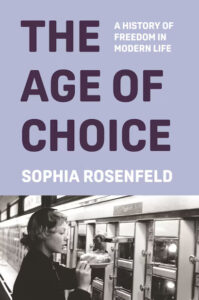
From The Age of Choice: A History of Freedom in Modern Life by Sophia Rosenfeld. Copyright © 2025. Available from Princeton University Press. The Age of Choice has been shortlisted for a Cundill History Prize.
Sophia Rosenfeld
Sophia Rosenfeld is the Walter H. Annenberg Professor of History at the University of Pennsylvania. She is the author of Democracy and Truth: A Short History and Common Sense: A Political History, among other books. Her writing has also appeared in leading publications such as the New York Times, the Washington Post, and the Nation. She is a member of the American Academy of Arts and Sciences.











